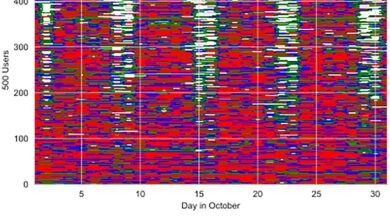IUD guidance, vaccine approval, NIH grants

The study, published in the Journal of the American Heart Association, followed over 2,000 patients after a heart attack or chest pain event. Researchers found that those who spent more time sitting or lying down during the day were more likely to have another cardiac event within the next three years. This was true even when accounting for factors like age, smoking, diet, and exercise. The researchers suggest that reducing sedentary time could be an important strategy for improving heart health outcomes in these patients.
While the study focused specifically on heart patients, the findings add to a growing body of evidence that sedentary behavior is harmful to overall health. Prolonged sitting has been linked to a variety of health issues, including obesity, diabetes, and even an increased risk of early death. Experts recommend breaking up long periods of sitting with short bouts of activity, such as standing up, stretching, or taking a short walk.
For more health and medicine news, be sure to subscribe to STAT’s Morning Rounds newsletter for daily updates delivered straight to your inbox.
A new study published today in Circulation: Cardiovascular Quality and Outcomes reveals the impact of sedentary behavior on the risk of cardiac events and mortality in patients who have experienced a heart attack or chest pain. The study, conducted between 2016 and 2020, involved over 600 patients from the Columbia University Medical Center who were monitored using wrist devices to track their movement for 30 days post-hospitalization. Researchers followed up with the patients one year later to assess outcomes.
The findings of the study indicate that individuals who were the least active, with an average of more than 15 sedentary hours per day, were two and a half times more likely to experience another cardiac event or die within a year compared to the most active group, who were sedentary for less than 12 hours a day. Moreover, replacing 30 minutes of sedentary time with 30 minutes of light activity, moderate to vigorous activity, or sleep each day reduced the risk of another cardiac event or death by 50%, 61%, and 15% respectively.
It is important to note that the data is based on patients from a single medical center and that the wrist devices used in the study could only measure the intensity of activity, not differentiate between sitting and standing. Despite these limitations, the results highlight the significant impact of reducing sedentary behavior on cardiovascular health outcomes in individuals recovering from cardiac events.
In other news, recent articles on topics such as the case of a brain-dead pregnant woman kept on life support, the debate over Medicaid cuts in Congress, the FDA’s approval of the first blood test for diagnosing Alzheimer’s, the closure of abortion clinics, and updates from the ASGCT conference are also being discussed in various publications. These stories shed light on important healthcare issues and advancements in the medical field.





